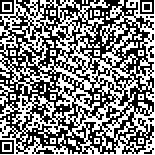| 摘要: |
| [摘要] 目的 探讨儿童社区获得性肺炎(CAP)细菌病原学特点及药敏情况,指导临床肺炎诊治。方法 系统分析956例住院CAP患儿的临床特征,细菌病原学特点和微生物敏感性试验情况。结果 956例CAP患儿痰培养中革兰阴性(G-)杆菌为653例,占68.3%;革兰阳性(G+)球菌为303例,占31.7%。主要有大肠埃希杆菌253例(26.5%),肺炎克雷伯杆菌166例(17.4%),流感嗜血杆菌78例(8.2%),鲍曼不动杆菌53例(5.5%),铜绿假单胞杆菌41例(4.3%),肺炎链球菌47例(4.9%)和金黄色葡萄球菌41例(4.3%)。二级医院CAP常见病原为流感嗜血杆菌、卡他莫拉菌、肺炎链球菌;而三级医院则为大肠埃希杆菌、肺炎克雷伯杆菌、鲍曼不动杆菌、凝固酶阴性葡萄球菌。铜绿假单胞杆菌对泰能和美罗培南均有耐药,鲍曼不动杆菌对泰能有一定的耐药率。肺炎链球菌对青霉素、复方磺胺甲恶唑、克林霉素、红霉素及阿奇霉素均耐药。金黄色葡萄球菌对青霉素全耐药,对复方磺胺甲恶唑、氨苄西林、红霉素、阿奇霉素及四环素也有较高的耐药率。结论 儿童CAP病原菌中革兰阴性杆菌并不少见,对抗菌药物耐药率高,需引起重视。 |
| 关键词: 社区获得性肺炎 病原菌 微生物敏感性试验 |
| DOI:10.3969/j.issn.1674-3806.2014.12.03 |
| 分类号:R 725 |
| 基金项目:广西科学研究与技术开发计划项目(编号:桂科攻0993003B-5) |
|
| Analysis study of bacterial pathogen characteristics of children with community-acquired pneumonia |
|
XIE Qing-ling, ZHEN Hong, TANG Xiao-yan, et al.
|
|
The People′s Hospital of Guangxi Zhuang Autonomous Region, Nanning 530021,China
|
| Abstract: |
| [Abstract] Objective To study the bacterial pathogen characteristics of children with community-acquired pneumonia(CAP) and antimicrobial susceptibility for clinical pneumonia treatment.Methods The clinical features, bacterial pathogen characteristics and microbial sensitivity test of 956 cases of hospitalized children with CAP were systematically analyzed.Results Gram-negative(G-) bacteria was detected in sputum culture from 653 of 956 cases of children with CAP, accounting for 68.3%; Gram-positive(G+) cocci in 303 cases, accounting for 31.7%. Among them, E.coli was detected in 253 cases(26.5%), klebsiella pneumoniae in 166 cases(17.4%), haemophilus influenzae in 78 cases(8.2%), acinetobacter baumannii in 53 cases(5.5%), Pseudomonas aeruginosa in 41 cases(4.3%), Streptococcus pneumoniae in 47 cases(4.9%) and staphylococcus aureus in 41 cases(4.3%). Common original pathogen of children with CAP in the secondary hospital were haemophilus influenzae, moraxelle catarrhalis and Streptococcus pneumoniae. While those in the tertiary hospitals were E. coli, klebsiella pneumoniae, acinetobacter baumannii and coagulase negative staphylococcus aureus. Klebsiella pneumoniae were partly resistant to Tienam and Meiluopeinan, and acinetobacter baumannii were also resistant to Tienam. Streptococcus pneumoniae were generally resistant to penicillin, and sulfamethoxazole, clindamycin and erythromycin and azithromycin. Staphylococcus aureus was completely resistant to penicillin and also highly resistant to sulfamethoxazole, ampicillin, erythromycin, azithromycin and tetracycline.Conclusion G- bacteria in children with CAP were not uncommon, while there be likely needed to pay seriously attention to higher antimicrobial resistance to bacteria. |
| Key words: Community-acquired pneumonia(CAP) Bacterial pathogen Microbial susceptibility tests |

